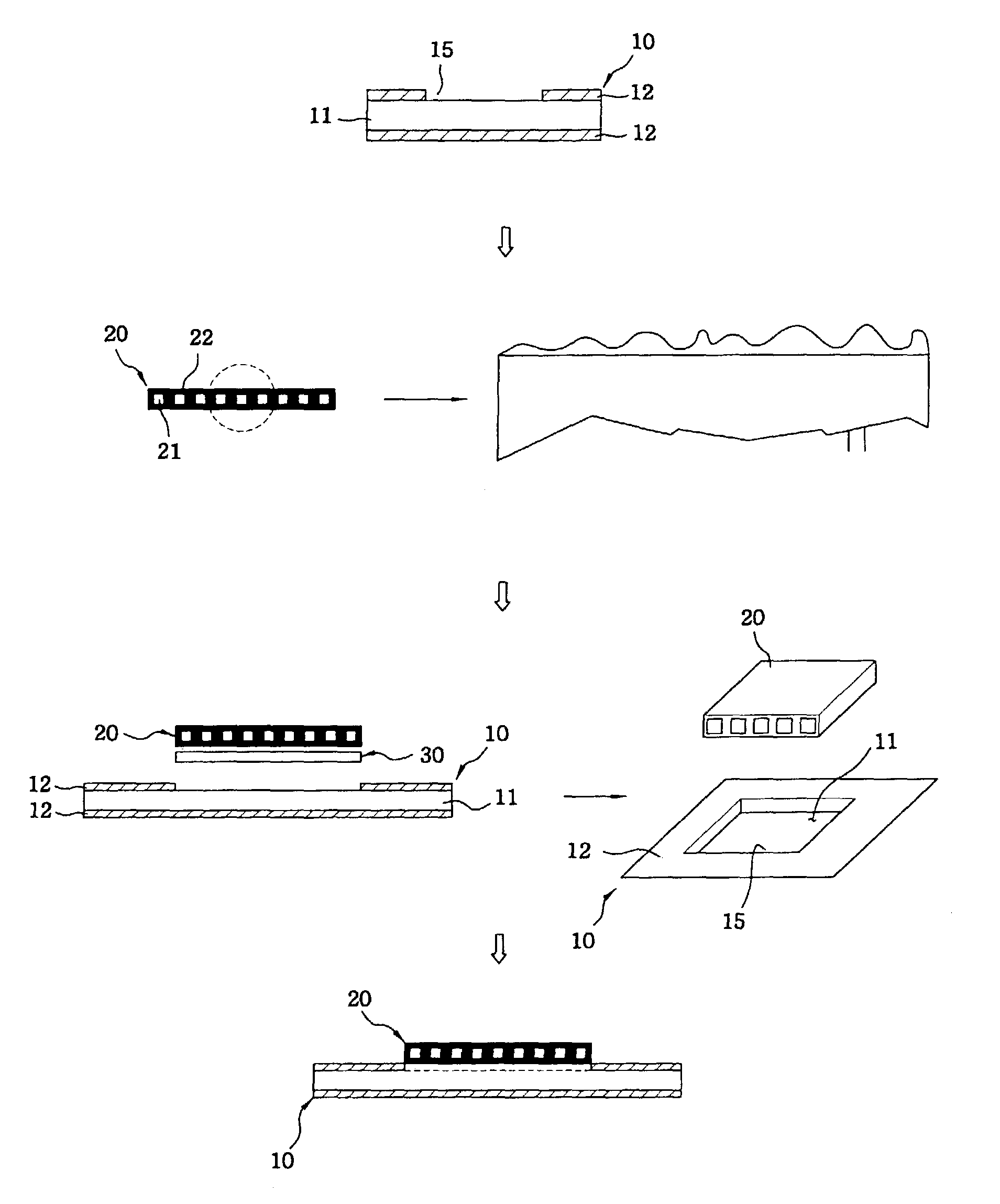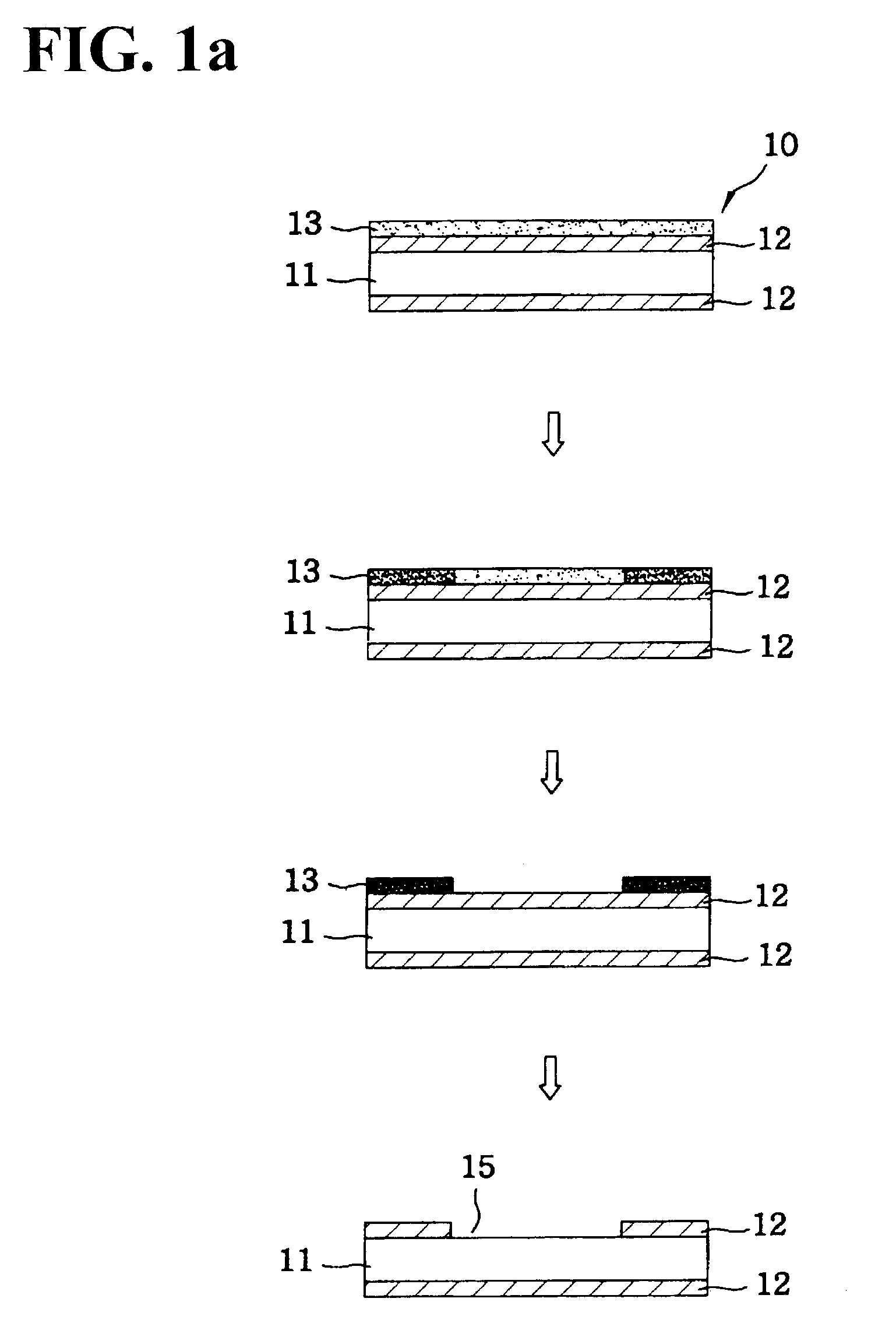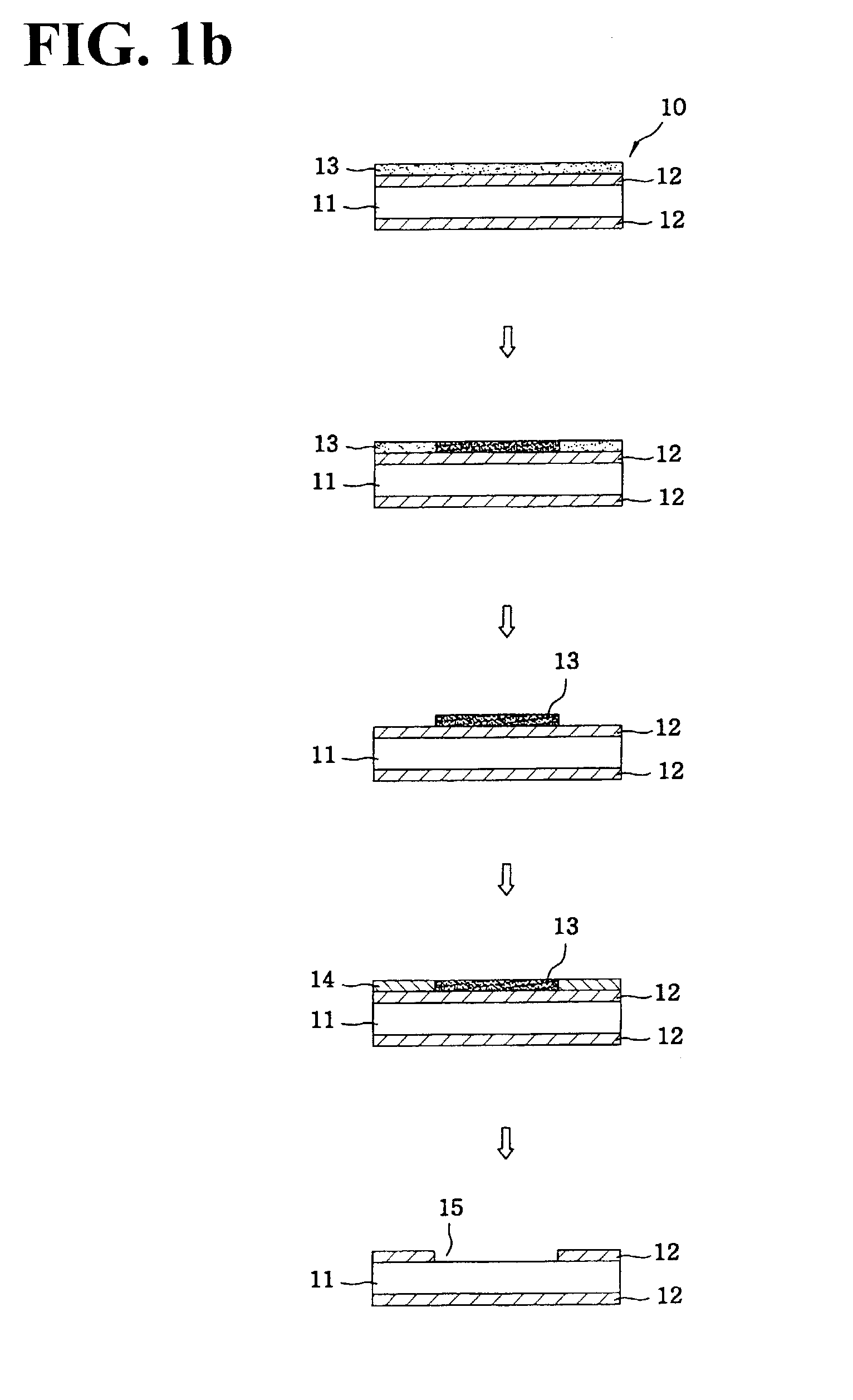Method of attaching optical waveguide component to printed circuit board
a technology of optical waveguide and printed circuit board, which is applied in the direction of photomechanical treatment originals, instruments, photomechanical equipment, etc., can solve the problems of lowering the optical interfacing properties, difficult application to a multi-layer printed circuit board, and inevitably required optical interfacing medium, so as to improve the flatness and precise alignment of the optical waveguide componen
- Summary
- Abstract
- Description
- Claims
- Application Information
AI Technical Summary
Benefits of technology
Problems solved by technology
Method used
Image
Examples
Embodiment Construction
[0040]The present invention provides a method of attaching an optical waveguide component to a printed circuit board, which enables improved flatness and precise alignment of the optical waveguide component without chemical or thermal-damage to the optical waveguide-component upon attaching.
[0041]Examples of the printed circuit board employable in the present invention include a double-sided printed circuit board having one dielectric substrate layer and two circuit layers, and a multilayer printed circuit board consisting of plural dielectric layers and circuit layers. As such, the dielectric layer may be a dielectric substrate layer or a dielectric adhesive layer.
[0042]It is well known in the art that the dielectric adhesive layer is employed for laminating a plurality of layers constituting a multilayer printed circuit board. In general, film-typed dielectric adhesive, which is referred to as a prepreg, is widely used in such laminating procedures.
[0043]The circuit layer refers t...
PUM
| Property | Measurement | Unit |
|---|---|---|
| conductive | aaaaa | aaaaa |
| thickness | aaaaa | aaaaa |
| surface roughness | aaaaa | aaaaa |
Abstract
Description
Claims
Application Information
 Login to View More
Login to View More - R&D
- Intellectual Property
- Life Sciences
- Materials
- Tech Scout
- Unparalleled Data Quality
- Higher Quality Content
- 60% Fewer Hallucinations
Browse by: Latest US Patents, China's latest patents, Technical Efficacy Thesaurus, Application Domain, Technology Topic, Popular Technical Reports.
© 2025 PatSnap. All rights reserved.Legal|Privacy policy|Modern Slavery Act Transparency Statement|Sitemap|About US| Contact US: help@patsnap.com



